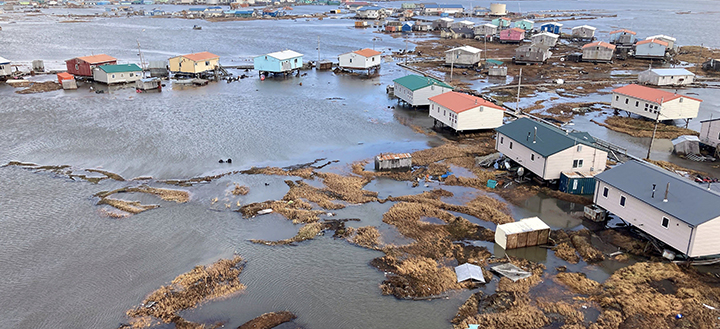Becoming a Community Development Block Grant Disaster Recovery (CDBG-DR) grantee for the first time can feel like a big challenge. CDBG-DR programs, overseen by the U.S. Department of Housing and Urban Development (HUD), are designed to help communities rebuild after disasters with a focus on long-term recovery.
These funds support disaster recovery, but managing them requires a clear understanding of program rules, responsibilities, and strategies that make recovery efforts effective. Grantees must follow federal guidelines, create thoughtful plans, and engage actively with stakeholders to deliver results.
Whether you are a disaster recovery planner, an emergency manager, or responsible for grant administration, the guidance below will help you get started with confidence. The five areas below highlight what first-time grantees should know.
#1 Progress Matters More Than Perfection
Disaster recovery is complex, and as a first-time CDBG-DR grantee, it’s important to remember that no recovery effort will go perfectly. The goal is to keep moving forward, adjust as needed, and deliver timely results that help your community rebuild.
Timeline Flexibility
While CDBG-DR grants come with deadlines for the expenditure of funds, HUD allows flexibility to address the realities of recovery efforts. This ensures that communities facing obstacles, such as contractor shortages or environmental reviews, can still progress.
Lessons from Hurricane Harvey
After Hurricane Harvey, Texas faced major hurdles in repairing housing and restoring infrastructure. By focusing on steady progress and adapting strategies along the way, the state successfully put more than $5 billion in CDBG-DR funds to work for recovery.
#2 Start with a CDBG-DR Administrative Action Plan
Develop an Administrative Action Plan before implementation. Grantees can get approval to use disaster recovery grant funds for administrative costs before the full Action Plan is approved.
This document includes proposed uses of the administrative funds and details on how these funds will help with the long-term recovery from a disaster.
Submitting this plan allows grantees to access and draw administrative funds earlier, enabling efficient and timely program management during a disaster.
What a CDBG-DR Action Plan Covers
Your action plan governs how the grant will be used, detailing everything from eligible activities to unmet community needs. HUD requires this plan to be approved before funds can be obligated or spent.
A strategic Action plan ensures you can:
- Prioritize projects that meet urgent needs, such as housing rehabilitation and long-term recovery goals.
- Adhere to compliance standards, avoiding costly penalties or delays.
- Build public trust by maintaining transparent communication with community stakeholders.
#3 Use State or Local Funds Early on CDBG-DR Reimbursable Activities
CDBG-DR operates as a reimbursement grant, meaning that initial expenditures must often be covered through state or local resources before federal reimbursement occurs. Proactively identifying eligible activities for reimbursement can accelerate the recovery timeline.
For grantees that may not have the capital to expend on CDBG-DR activities up-front, they can also implement a paid-when-paid expense management to reduce or eliminate out-of-pocket costs.
Eligibility for Reimbursement
Reimbursement is available for preapproved, eligible activities such as housing repairs, infrastructure restoration, or mitigation projects. For example, if a county uses local funds to repair homes right after a disaster, those costs may later qualify for repayment through CDBG disaster recovery funds. Pre-award costs come with additional compliance and administrative requirements, but are significantly beneficial in accelerating recovery.
Using local or state resources early can jumpstart projects while waiting for federal funds to flow. Once reimbursed, those dollars can be reinvested into additional recovery activities, helping communities maintain momentum.
Hurricane Michael’s Example
After Hurricane Michael, Florida counties used CDBG-DR funds to support urgent recovery efforts, including housing repairs and infrastructure restoration. Counties initially covered certain eligible costs with local resources, which allowed projects to begin quickly while meeting federal requirements for later reimbursement. This approach helped recovery activities start promptly and enabled communities to rebuild more efficiently.
#4 Select Your CDBG-DR Implementation Model Early
CDBG-DR Implementation Models
- In-House Management: Grantees with strong internal capacity and experience in disaster recovery can manage projects internally. This approach requires well-established financial, compliance, and staffing systems.
- Third-Party Contractors: Hiring contractors provides additional expertise and scalability, which can be especially helpful for large-scale recovery efforts. Even when contractors are used, the grantee remains responsible for oversight and compliance.
- Public-Private Partnerships: Collaborating with nonprofit organizations or private companies can help expand resources and extend program reach.
Regardless of your choice, it is important to confirm that staff and partners have sufficient capacity and that all stakeholders are aligned.
Clear roles, responsibilities, and communication channels help projects stay on track and meet CDBG-DR requirements.
#5 Understand the Regulatory Framework
CDBG-DR grants come with a complex set of regulatory requirements, which can be overwhelming for beginners.
Familiarity with key resources, such as the HUD website and HUD technical assistance, is necessary.
However, understanding the intricacies of HUD compliance is essential to avoid delays, penalties, and funding rescissions.
National Objectives
All CDBG-DR activities must meet at least one of HUD’s national objectives:
- Benefit low-to moderate-income (LMI) individuals.
- Address slum and blight conditions.
- Meet an urgent community need caused by the disaster.
Grantees are also required to adhere to federal procurement standards to ensure that contracts are awarded fairly, transparently, and in a way that promotes responsible use of funds. These regulations help prevent favoritism, ensure competitive bidding, and maximize value.
In addition, before any project can proceed, an environmental review must be conducted to assess potential impacts on natural resources, wildlife, and the surrounding community. These assessments are essential to identifying and mitigating risks, ensuring that projects are sustainable and do not cause unintended harm to the environment.
Individualized Program Preferences
HUD permits grantees to request waivers or apply specific adaptations, such as timelines, to better serve their unique recovery needs. Coordination with your HUD field office can simplify this process.
Common Questions from First-Time Grantees
What is CDBG-DR?
CDBG-DR is a subset of the broader Community Development Block Grant (CDBG) program, specifically aimed at helping communities recover from disasters.
Unlike regular CDBG funds, CDBG-DR is allocated through supplemental appropriations following federally declared disasters. It helps cover recovery costs for housing, infrastructure, economic development, public service, mitigation, and local match for other federal programs, while supporting LMI populations.
How long do CDBG-DR funds last?
CDBG-DR funds typically have a five-year expenditure timeline, though exceptions or extensions may apply for complex projects.
Is CDBG-DR solely a reimbursement grant?
Yes, CDBG-DR generally operates as a reimbursement grant. Grantees can use local or state resources to cover eligible expenses initially and then request reimbursement from federal funds once approved.
Pre-award costs and administrative planning expenses are eligible for upfront funding in some cases.
What does CDBG-DR stand for?
CDBG-DR stands for Community Development Block Grant – Disaster Recovery. It is a subset of the broader CDBG program, designed specifically to help communities recover after federally declared disasters.
Do you have to pay back a CDBG grant after it has been used?
No, CDBG-DR grants are not loans, so grantees do not have to repay the funds. However, funds must be used according to HUD rules and approved project activities.
How are CDBG-DR funds allocated?
HUD allocates CDBG-DR funds based on factors such as the scale of the disaster, the impact on LMI populations, and community needs. Allocation amounts are usually determined in supplemental appropriations following federally declared disasters.
What is an example of a CDBG-DR project?
Examples of eligible CDBG-DR projects include housing repairs or reconstruction, public infrastructure restoration, debris removal, and mitigation initiatives that reduce future disaster risks.
Explore the comprehensive FAQ section on the HUD website for more answers to common questions about the CDBR-DR program.
Charting a Path Toward Resilience
Becoming a first-time CDBG-DR grantee is a significant responsibility, but it also offers an opportunity to help your community rebuild after a disaster.
Focusing on steady progress, thoughtful planning, early use of eligible funds, and adherence to HUD requirements can make the process more manageable and effective.
Understanding how CDBG disaster recovery works, including reimbursement rules, project eligibility, and federal regulations, allows grantees to maximize the impact of their funds. With careful planning and compliance, recovery initiatives can start promptly, support long-term resilience, and meet the needs of affected residents.

Learn more about disaster resilience strategies and resources by reaching out to Tidal Basin’s team of experts, your trusted partner in successful recovery implementation.
Our guidance can help communities navigate CDBG-DR requirements, optimize funds, and achieve recovery goals efficiently.



